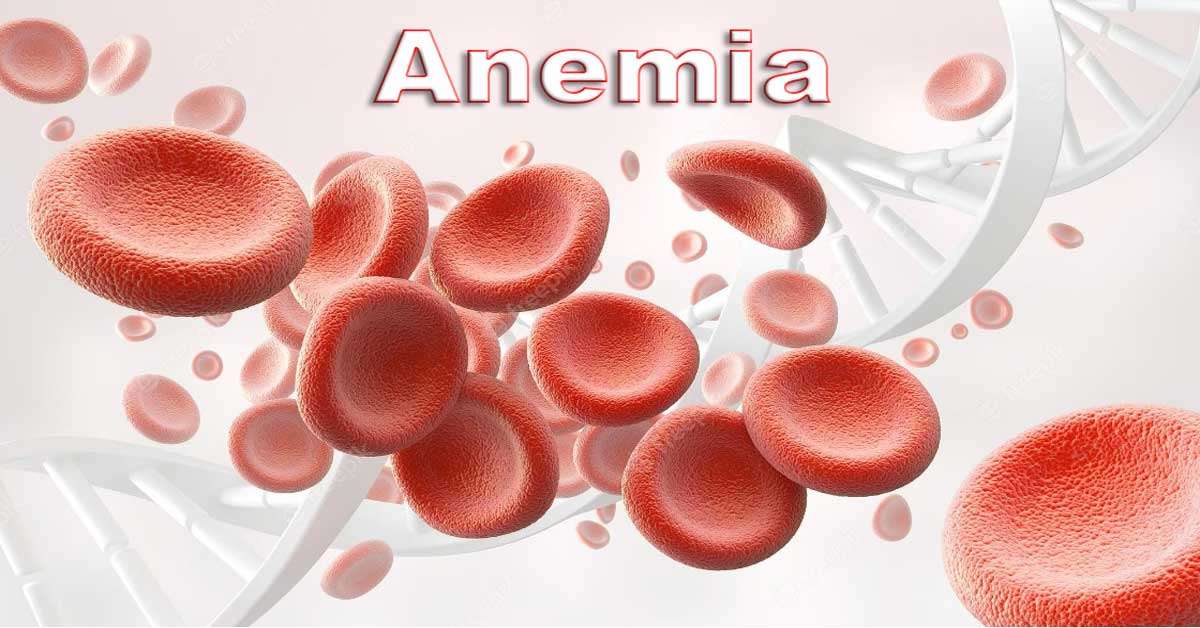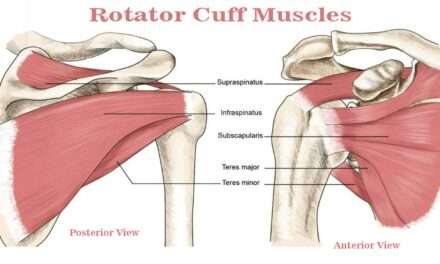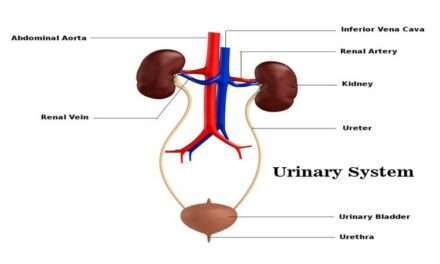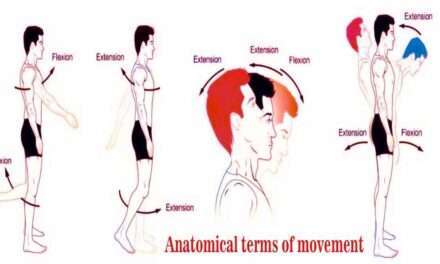Do you want to know about Anemia? Does it is dangerous or not? What are the signs and symptoms, it has a complete cure or not? How you will know that you are suffering from this illness? Then read this article keenly to understand what is Anemia, and how it can be cured. It develops when the body does not have enough red blood cells. If you have insufficient hemoglobin, too few or abnormal red blood cells, or both, your blood’s ability to transport oxygen to the body’s tissues will be compromised.
It causes various symptoms, including fatigue, dizziness, and shortness of breath. The optimal hemoglobin concentration required to meet physiologic needs is influenced by age, gender, altitude of residence, smoking habits, and pregnancy status. Erythrocytes are uniform in size and shape in healthy people. An automated blood count reveals that a single cell’s mean corpuscular volume (MCV), or estimated volume, is near 90 fL. Automated systems typically use changes in hemoglobin concentration, red cell count, and MCV to indicate red blood cell abnormalities.
Microcytic cells are small (having low MCVs), whereas macrocytic cells are larger than normal. Poikilocytosis and anisocytosis are erythrocyte (red blood cell) disorders distinguished by relative non-uniformities in cell size or shape. It is a major public health issue disproportionately affecting children and pregnant women. According to WHO statistics, It affects 40% of pregnant women and 42% of children under five worldwide.
Although many different types of red cell disorders exist, anemia is the most common. An abnormally low blood hemoglobin concentration defines this illness. Although there are many methods for classifying red blood cells, those based on size and shape are the most commonly used.
Anemia symptoms
It can cause various symptoms, such as fatigue, weakness, dizziness, and sleepiness. Children and expectant mothers are especially vulnerable to maternal and infant mortality. In low-income areas, it is reasonable to assume that it affects a disproportionately high number of young children and women of childbearing age. It has also been demonstrated that iron deficiency anemia reduces adult productivity and children’s cognitive and physical development.
Anaemia is a sign of poor nutrition as well as poor health. It is a problem in and of itself. Still, it can exacerbate other global nutritional issues such as stunting and wasting, low birth weight, and childhood obesity due to a lack of energy. This illness can also negatively impact a child’s academic performance and an adult’s ability to work productively, which can have additional social and economic consequences for the individual and their family. You may be completely unaware of your anemic illness due to the subtle nature of the symptoms.
Symptoms frequently appear as your blood cells begin to deplete. The following symptoms may be present depending on the cause of anemia. Fast or unusual heartbeats; Headaches; Pain in your bones, chest, belly, and joints; Dizziness, lightheadedness, or a feeling that you are about to pass out; Dizziness; Problems with growth in children and adolescents; Cold extremities, pale or yellow skin, shortness of breath, and fatigue or weakness.
Types of anemias by Cause
- Nutritional
- Megaloblastic or Vitamin-deficiency
- Caused by Blood Loss
- Caused by Destruction of Red Blood Cells
- Inherited
- Caused by Faulty Red Blood Cell Production
- Autoimmune hemolytic
Nutritional anemias
Nutritional anemia is caused by a lack of all the nutrients in the diet that are necessary for blood formation. If these nutrients are not included in the diet for a long time, the complaint of this illness starts. Body organs stop working properly. Therefore, it is important to ensure that the diet is balanced and contains all the essential nutrients that help improve the performance of the human body. The nutritional anemias are briefly described below.
Iron deficiency Anemia
Megaloblastic or vitamin-deficiency anemia
Megaloblastic is a kind of vitamin deficiency that occurs when an individual does not consume enough vitamin B12 and vitamin B9 (folate). These two vitamins are required for the production of red blood cells. Certain medications, excessive alcohol consumption, or intestinal diseases such as tropical sprue can also cause vitamin deficiency. The following are some reasons for this type of disease:
Nutritional deficiency: if you don’t eat much meat or none, you risk not getting enough vitamin B12. If you overcook your vegetables or don’t eat enough of them, you might not get enough folate.
Megaloblastic occurs when a person’s diet is deficient in vitamin B12, folate, or both.
Pernicious is a condition that occurs when your body fails to absorb enough vitamin B12.
Anemia Caused by Blood Loss
You risk losing some of your red blood cells when you bleed. It could happen gradually over a long period, and you might not even notice. The following are some possible causes:
• Gastrointestinal conditions include stomach cancer, ulcers, hemorrhoids, and gastritis (stomach inflammation).
• NSAIDs, such as aspirin and ibuprofen, have increased the risk of gastritis and ulcers.
• A woman’s period, especially if she has particularly heavy menstruation (or heavy period). There could be a link between this and fibroids.
• After a traumatic event, road accidents, a bullet hit, or surgical procedures like delivery, major operations, Orthopedic procedures, etc., are the causes of blood loss anemia.
Anemia Caused by Destruction of Red Blood Cells
If red blood cells are fragile and unable to withstand the stress of traveling through the body, they can rupture and cause hemolytic anemia. It is referred to as sickle cell anemia. You may have been born with this condition, or it developed later in life. An immune system attack, such as in the case of lupus; other times, the causes of hemolytic anemia are unknown; however, the following are possible: This could happen to anyone, including an unborn child or a newborn baby. Hemolytic disease of the newborn is the medical term for this condition.
• Diseases that can be passed down from generation to generation, such as sickle cell anemia, thalassemia, and thrombotic thrombocytopenic purpura (TTP)
• Spleen enlargement. In extremely rare cases, this can result in red blood cells becoming trapped and being destroyed before their time.
• Something that stresses your body, such as an infection, certain drugs, snake or spider venom, or certain foods
• Toxins resulting from a severe liver or kidney condition
Potential causes include vascular grafts, prosthetic heart valves, tumors, severe burns, exposure to certain chemicals, hypertension, and clotting disorders.
Autoimmune hemolytic anemia
Inherited anemias
1. Sickle cell anemia
In the United States of America, African Americans and Hispanic Americans are disproportionately affected by this condition. Due to a genetic error, your normally disc-shaped red blood cells have taken on the shape of crescents. As a result, the cells change from round, flexible discs to rigid, adhesive sickle cells that obstruct blood flow. Anemia is caused by the rapid breakdown of red blood cells, preventing oxygen from reaching the body’s organs. The painful condition can also be caused when crescent-shaped red blood cells become entrapped in the tiny blood vessels.
2. Thalassemia
Thalassemia developed by a defect in the formation of hemoglobin, specifically the molecule’s fourth chain. It causes the body to produce abnormally small red blood cells, but how many are produced determines the severity of the condition. People of Mediterranean, African, Middle Eastern, or Southeast Asian descent are more likely to be affected than those of other racial or ethnic backgrounds. Cooley’s anemia is the most severe manifestation of this condition, ranging from relatively harmless to potentially fatal.
Fanconi anemia: This is a rare blood disorder.
Diamond-Blackfan: anemia is inherited in which the bone marrow fails to produce enough red blood cells.
Anemia Caused by Faulty Red Blood Cell Production
Anemia Caused by Faulty Red Blood Cell Production If you have this type of anemia, your body may not produce enough blood cells, or the blood cells it produces may be defective. It’s possible that something is wrong with your red blood cells or that you’re not getting enough of the minerals and vitamins your body needs for red blood cell formation. It is possible in either case. Problems with bone marrow and stem cells are also linked to these potential anemia causes.
- Anaemia due to iron deficiency
- Sickle cell disease
- Caused by a lack of certain vitamins, such as b12 or folate
Anemia is caused by bone marrow and stem cell problems; this condition may prevent your body from producing enough red blood cells. Some stem cells in bone marrow can differentiate into red blood cells. You may develop anemia if your body does not have enough stem cells, if they do not function properly, or if they are replaced by other cells, such as cancer cells. The following symptoms characterize anemia developed by bone marrow or stem cell problems:
Aplastic anemia
It occurs when a person has insufficient or no stem cells. Because of your family history of infection, chemotherapy, radiation, or medication-induced damage to your bone marrow may predispose you to develop aplastic anemia. Leukemia and multiple myeloma are other cancers that frequently manifest in the bone marrow. There can sometimes be a clear reason why someone has aplastic anemia.
Lead poisoning
Lead is toxic to bone marrow, decreasing the body’s red blood cell count. Lead poisoning can occur in adults and children, such as when adults are exposed to lead at work or when children eat paint chips containing lead. Furthermore, the illness can be contracted if improperly glazed pottery used to prepare your food comes into contact with your food.
Thalassemia
It happens when there is an issue with hemoglobin formation, specifically when all four chains do not form properly. It causes the body to produce abnormally small red blood cells, but how many are produced determines the severity of the condition. People of Mediterranean, African, Middle Eastern, or Southeast Asian descent are more likely to be affected than those of other racial or ethnic backgrounds. Cooley’s anemia is the most severe manifestation of this condition, ranging from relatively harmless to potentially fatal.
Treatment of Anemia
There are some basic and important points to keep in mind to treat this illness. Having anemia makes it difficult to lead a normal life. Your family doctor will provide guidance and prescribe treatment based on the type of disease diagnosed first. But we will still tell you to eat some kind of food that can protect you from different types of anemia. Your disease type will determine the treatment you receive.
- If your doctor determines you are vitamin B12 or folate deficient, you will be prescribed dietary supplements.
- If you have aplastic anemia, you may require medication, blood transfusions, or a bone marrow transplant (in which you receive stem cells from a donor).
- Immunosuppressive medications may be required to treat hemolytic anemia. Your physician may refer you to a vascular specialist.
- If the condition is caused by blood loss, surgery to locate and stop the bleeding may be required.
- If you have iron deficiency, you will most likely need to change your diet and take iron supplements.
- Thalassemia is usually not treated; however, if your condition is severe, you may need blood transfusions, a bone marrow transplant, or surgery.
- Analgesics, folic acid supplements, intermittent antibiotics, or oxygen therapy may be used to treat sickle cell anemia. Hydroxyurea, or Droxia, Hydrea, and Siklos is a commonly prescribed medication for reducing sickle cell pain crises (a complicated mechanism). The prescription medication voxelator (Oxbryta) can help red blood cells maintain their proper shape. Adakveo, also known as Crizanlizumab-tmca, prevents blood cells from adhering to one another and blocking blood vessels. Endari, a brand of L-glutamine oral powder, can reduce the number of times you need to go to the hospital for pain management and protect you from acute chest syndrome.





